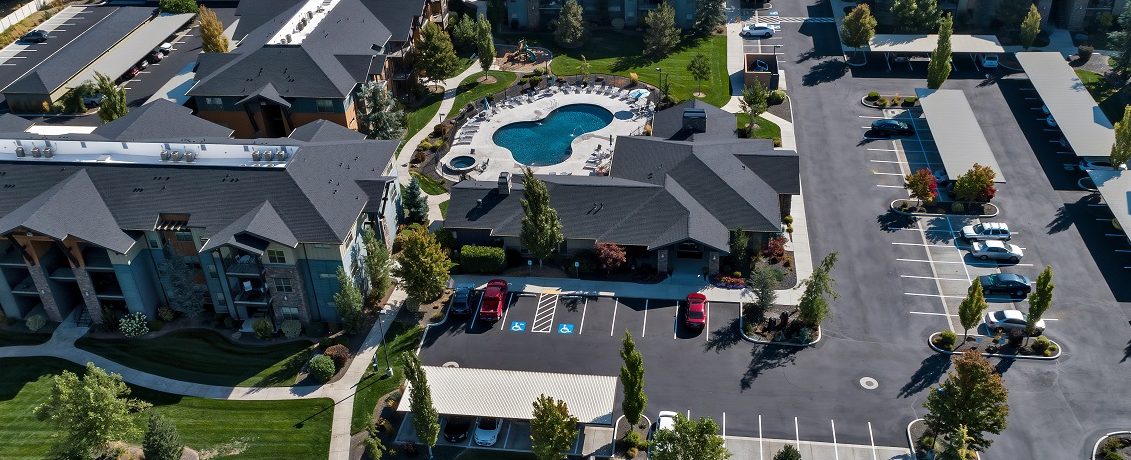Create a New Building Parking Lot Policy
We covered rules and regulations in buildings previously, but what are residents’ responsibilities on automobiles and parking?

Struggling with managing your buildings. See our Property Management Guide.
In some situations, an addendum will be required for residents to sign during the lease signing.
For landlords, creating a building parking lot policy can help tenants and visitors comply with the parking rules. That might result in much less frustration and complaints.
Here’s a Few Tips for Landlords for Creating a Parking Policy:
- Create Assigned Parking Spaces: select assigned parking spaces for each resident to ensure that your good tenants have a reliable, consistent, designated spot for parking which reduces conflicts over parking availability.
- Guest Parking Spots: designate guest and property management and service delivery parking spots with clear restrictions or time limits to avoid overcrowding, good traffic flow, and inconvenience to your paying tenants.
- Use Resident Permits: issue resident parking permits or decals to ensure that only authorized vehicles are parked within the premises. This can help reduce unauthorized parking and improves security, enable parking tickets to discourage further incidents.
- Arrange Visitor Parking Passes: Visitor parking passes or permits for guests allows tenant’s visitors to park in designated areas without the risk of being towed or fined.
- Handicap Parking: Implement accessibility regulations by designating and clearly marking handicap parking spaces near building entrances, and monitor frequently to ensure that these spaces are only used by individuals with legitimate and valid handicap permits.
- Post a Towing Policy Visibly: Larger or more visible no parking sign helps to discourage unauthorized or improperly parked vehicles. Place near street parking entrances and elevators with bright colors. Inform residents and visitors of the consequences for non-compliance.
- Maintenance and Snow Removal: Post information regarding snow removal requirements for all parking spaces and lots and what tenants should do during maintenance or snow removal activities. Inform residents in advance via your property management software communication channels about any scheduled maintenance or snow removal activities and where they might park during those times.
- Posting Prohibited Parking Areas: Clearly mark areas where parking is not allowed, such as fire lanes, loading zones, or areas which could obstruct emergency access. Enforce parking restrictions in your building or HOA to promote safety and compliance.
- Bicycle Parking Zone: create a bicycle parking areas or racks for residents who use bicycles and ensure personal and bicycle accessibility and security.
- Policy Communication and Enforcement: Regularly communicate the parking policy to residents through signage or the tenant portal. Enforce your policy consistently to ensure tenants and visitors respect the safety and rights of all tenants.
- Install a digital security system: buy a system with high quality cameras and use bright LED lighting to promote a feeling of safety and security, to discourage bad behavior and make your parking lot safer for tenants.
It’s important to tailor the building parking policy to the specific needs and constraints of your apartment building. Consult with property management, consider local regulations, and seek input from residents to ensure your new building parking policy is fair, transparent, and effectively addresses parking challenges within your building.
Tips For Tenants on Building Parking
Registering Your Vehicle
Commonly, your vehicle(s) must be registered with management by submitting a copy of its current DMV registration and proof of liability insurance. Management may also request all residents to display an office-issued parking sticker in a clearly visible area of the vehicle (windshield or dash).
Tenants vehicles must be in an operable condition at all times. They must keep the assigned parking spot properly and in a clean condition. For instance, if the residents’ vehicle causes an oil leak, they will be assessed charges for the damages. If the tenant’s vehicle is non-operational, it will be tagged with notice and subject to tow, normally within 48 hours.
Tenants Should be Encouraged to Know the Parking Rules
Via your property management platform’s tenant communications feature, and on your website, you can educate tenants and encourage them to avoid doing the things that tenants and their visitors sometimes do.
If you’re a tenant, it’s typical that you may only park at assigned parking space. If you park in a wrong parking space, your vehicle will be subject to towing at your expenses. It is also not uncommon that trailers, boats, motorcycles, or other recreational vehicles are prohibited without management’s prior approval.
Double parking, parking at red curb zone may also be subject to towing at your expenses. In some cases, management may require all vehicles to park front forward. In other words, you are not allowed to back your vehicle into spaces. Please pay extra attention to handicapped parking spaces. If you don’t meet the needs of parking at a handicapped space, do not park there.
Note: Please see other posts in our landlord management series including: Apartment Resident Handbook, Resident Disability Requests and Inspection and Maintenance Checks.
Activity in the Parking Lot
Additionally, repairs to vehicles, car washing, or storage of vehicles in the parking facilities or common areas are prohibited for building safety reasons.
While no one would like to encounter a vehicle break-in, here are few precautions and measures residents can practice in order to prevent vehicle break-in
- Observe your surroundings before you step outside from your vehicle
- Always lock your vehicle doors even you may leave your vehicle for a moment
- Never leave anything exposed in your vehicle
- Report suspicious activity to the Police Department.
Save the Police Department’s non-emergency phone number on your cell phone. Some Police Departments may also provide a reporting digital application so that you may report the incident instantly. When you reach out and report an incident to the local Police Department, it’s essential for you to provide the details of suspicious activity such as date, time, location, who was involved in the activity. Using your smartphone you can capture images to help police.
Additionally, vehicle information such as license plate number, the make, color, model of the vehicle are also critical for the police officer to investigate the incident.
Remember all parking is at your own risk. As a resident, you are responsible for any vehicle belongings to your family members and visitors.
Top Property Management Software | Property Management Guide | Apartment Lease Transfers | How Can I Transfer to another Apartment? | Reviews of Rental Property Software | Housing Market Forecast | Landlord Software | Property Management Guide | Income and Expense Reports | Resident Accommodation Requests | Tenant Eviction Filing | Inspection and Maintenance Checks | Property Performance Standards | Property Management Guide | Building Operations | Building Rules | Tenant Moves | National Apartment Association





